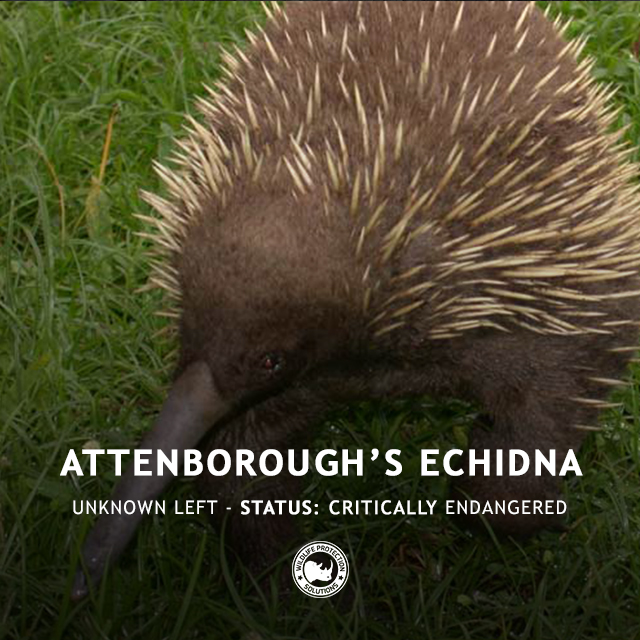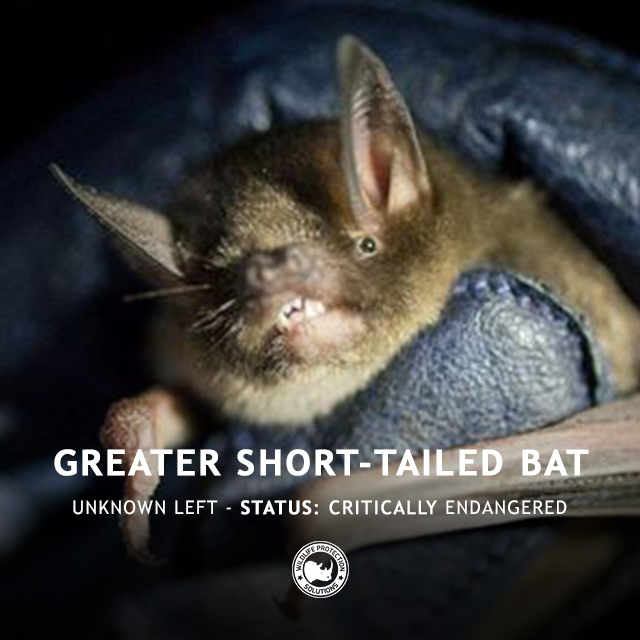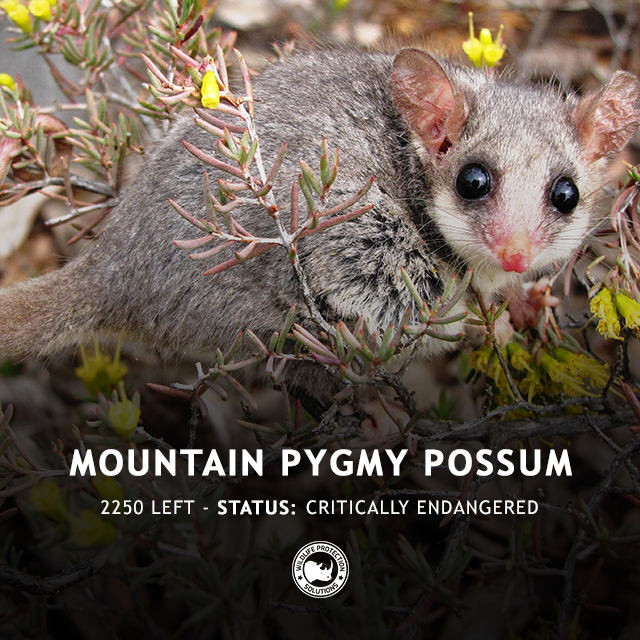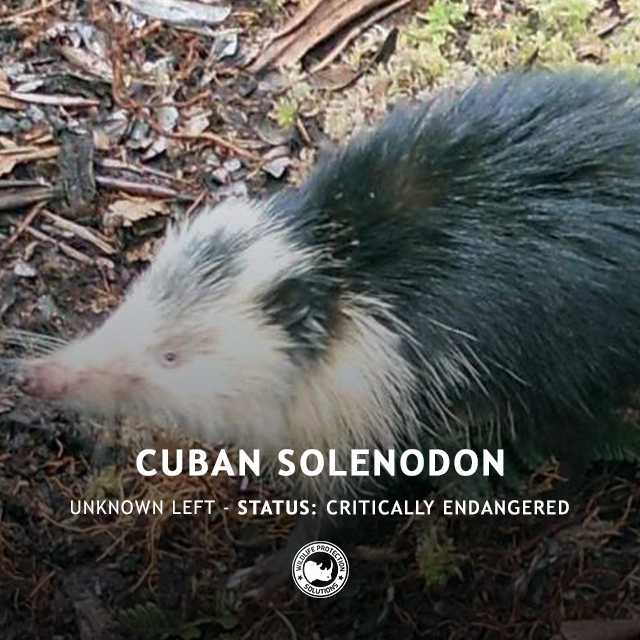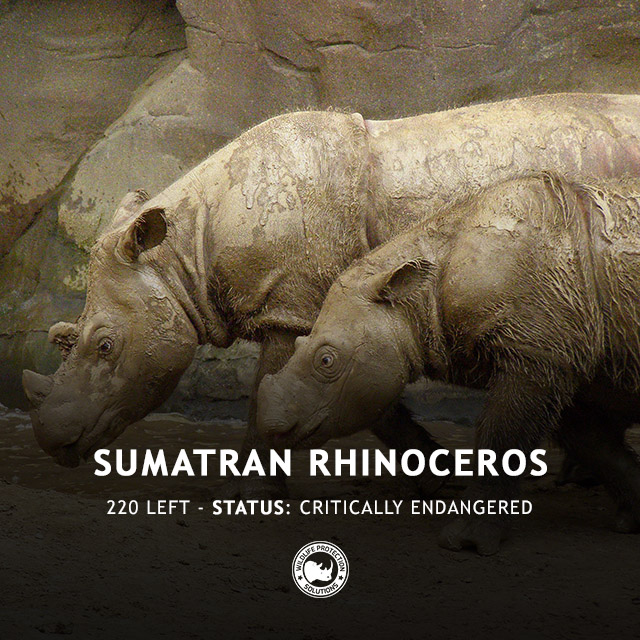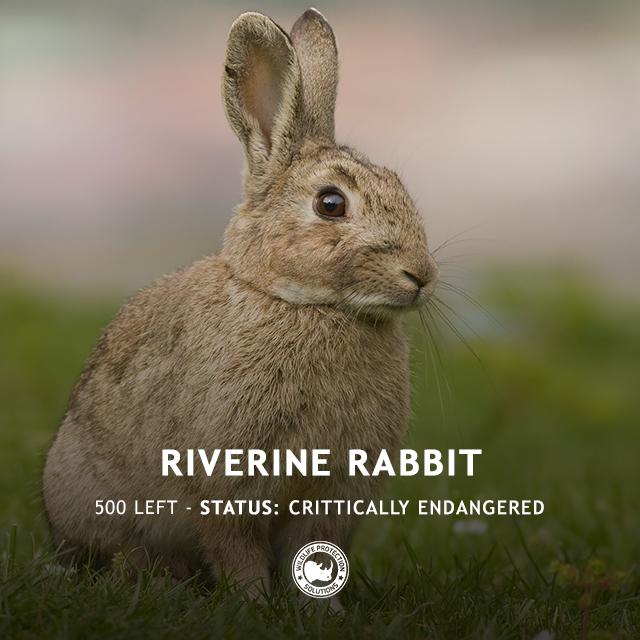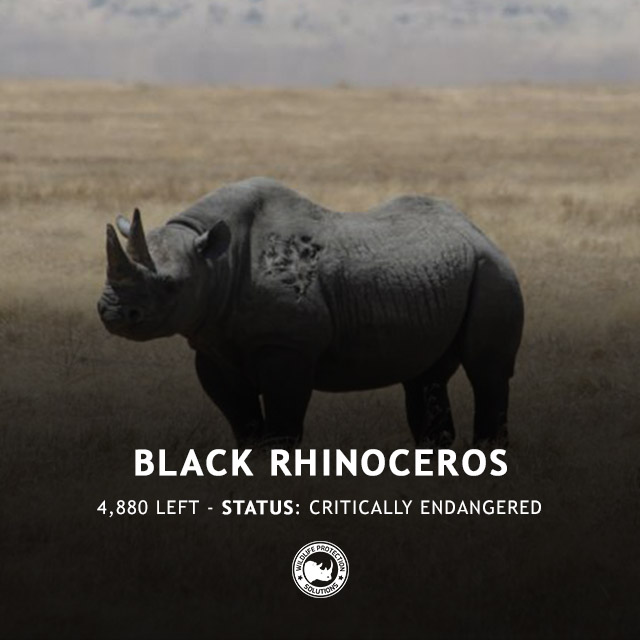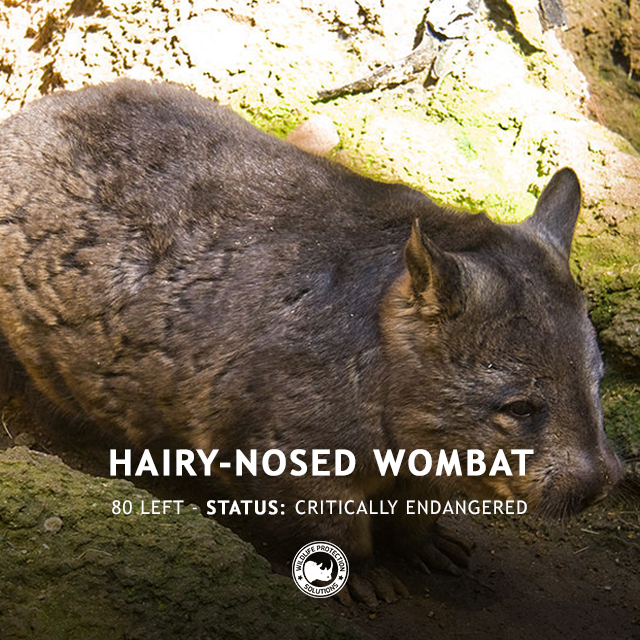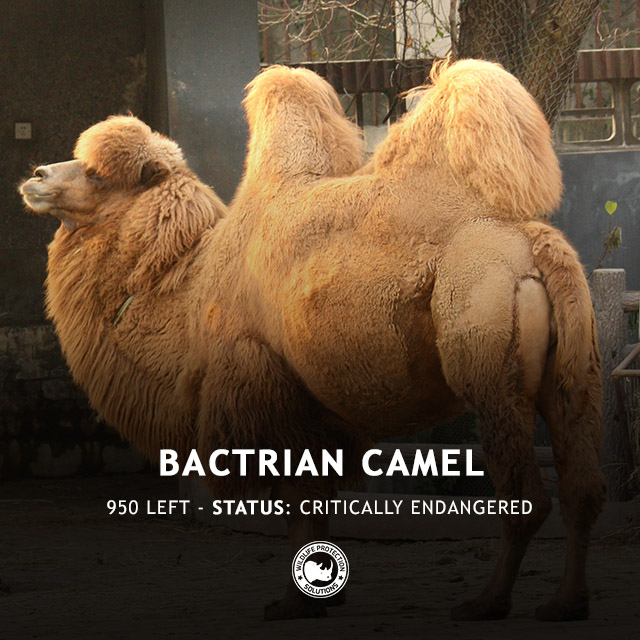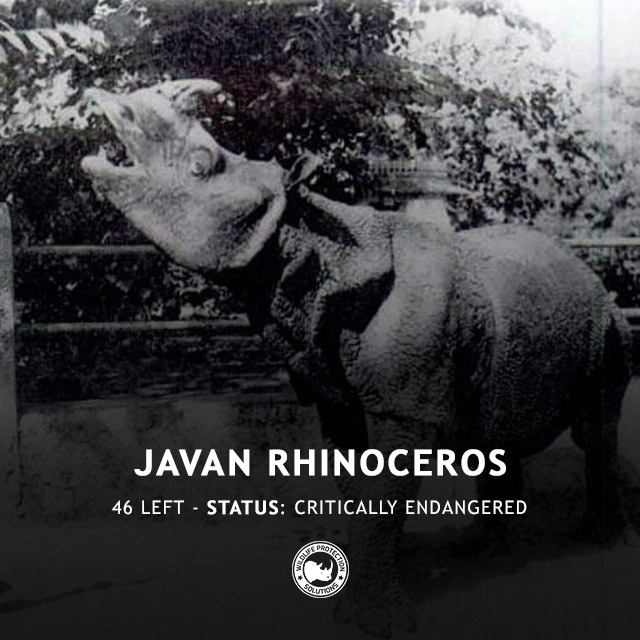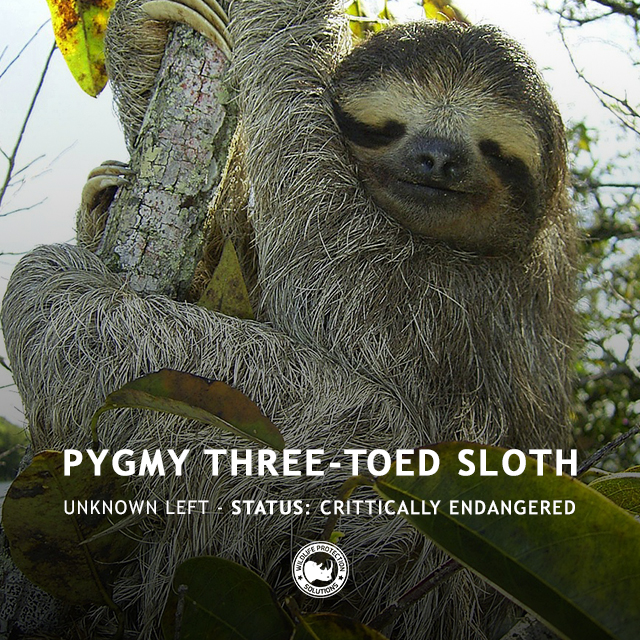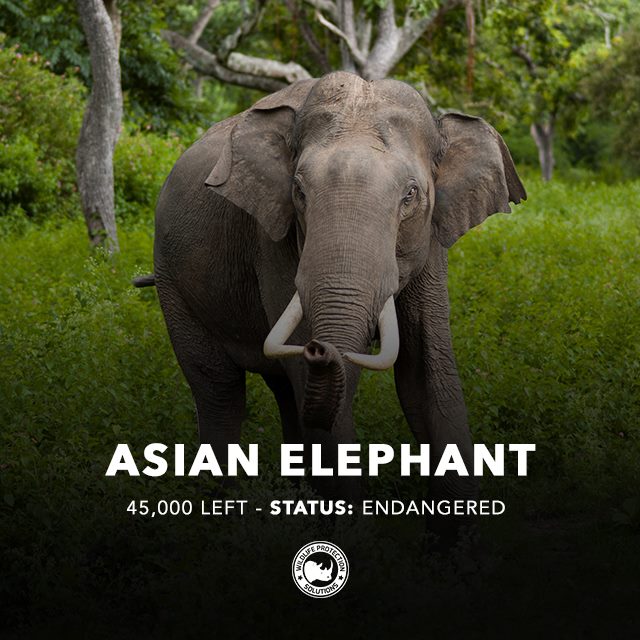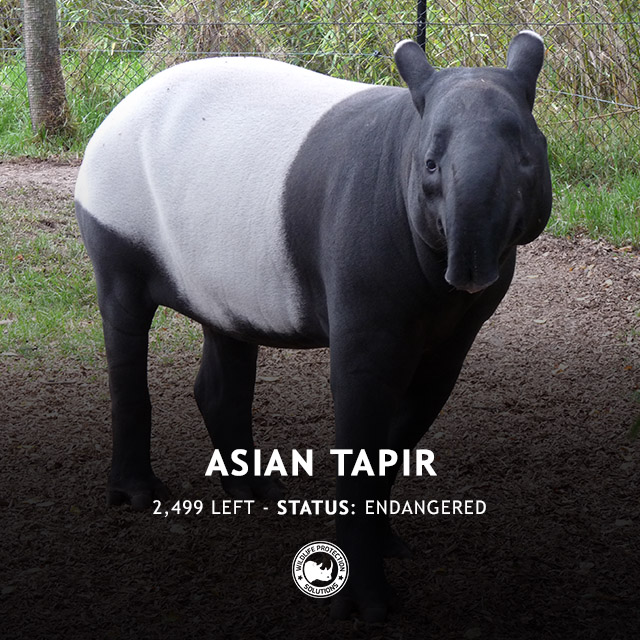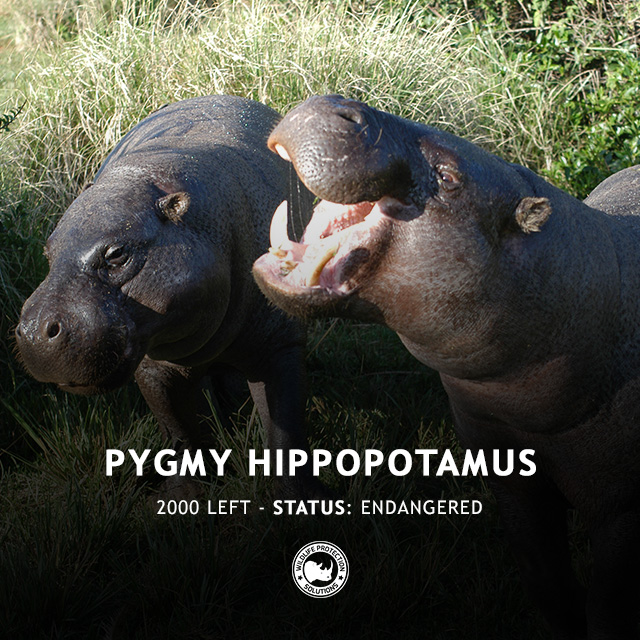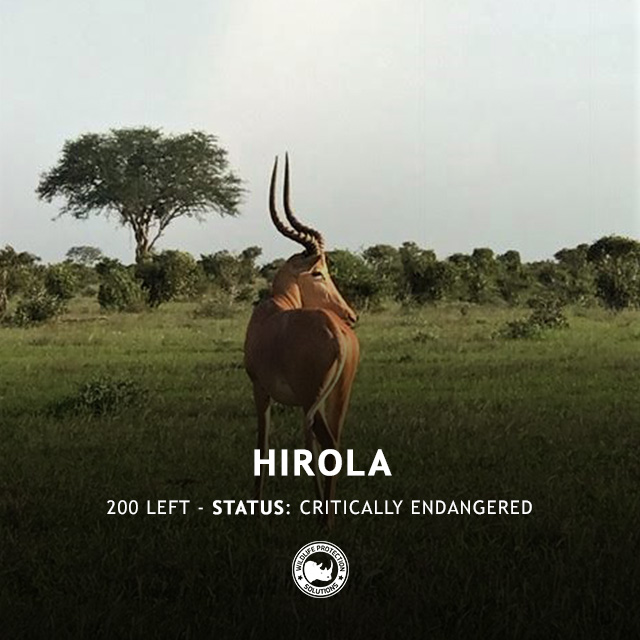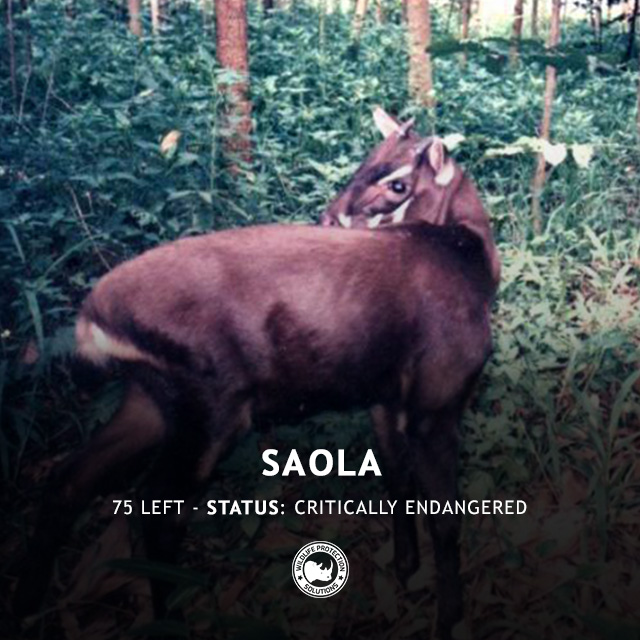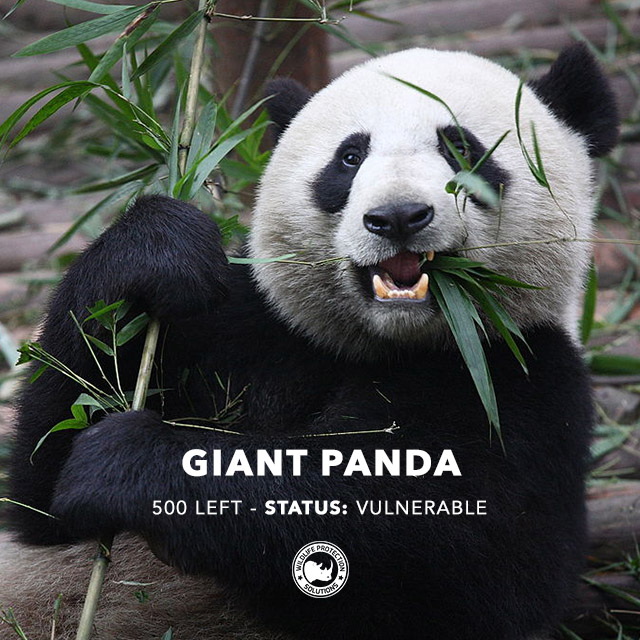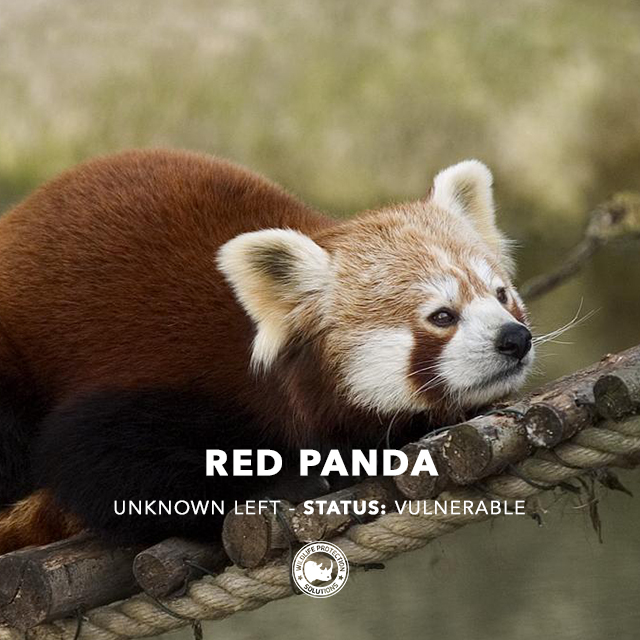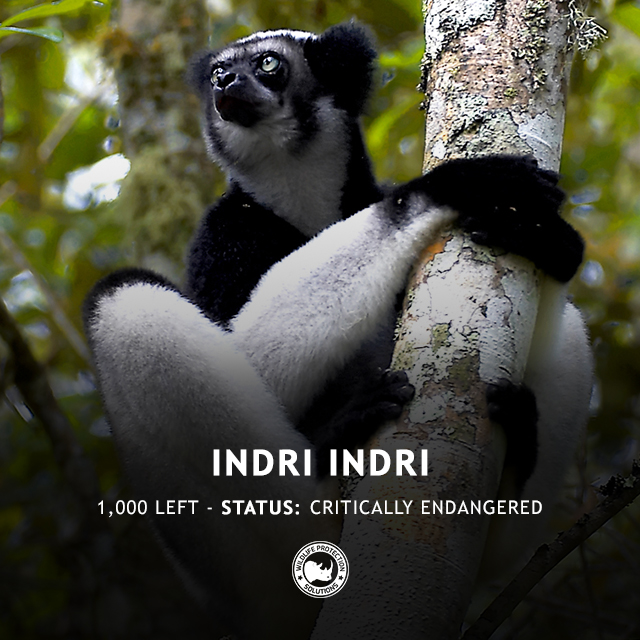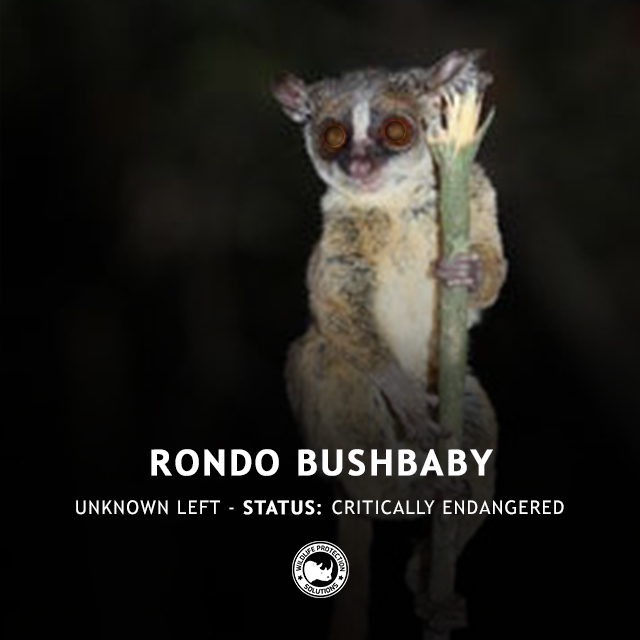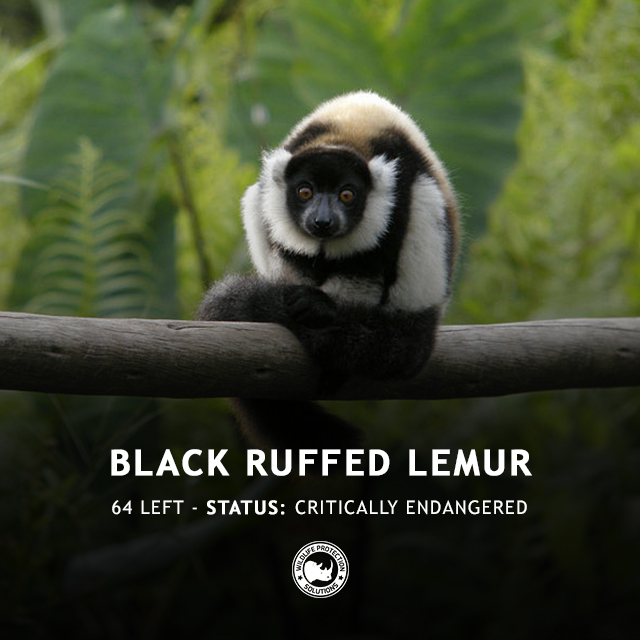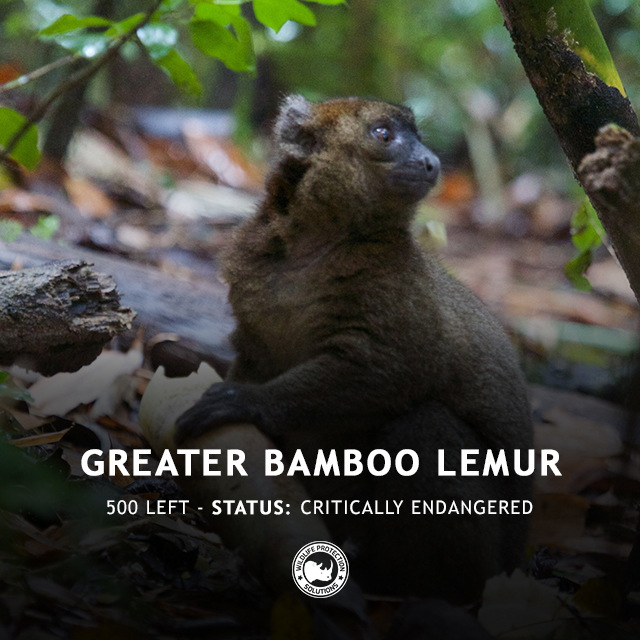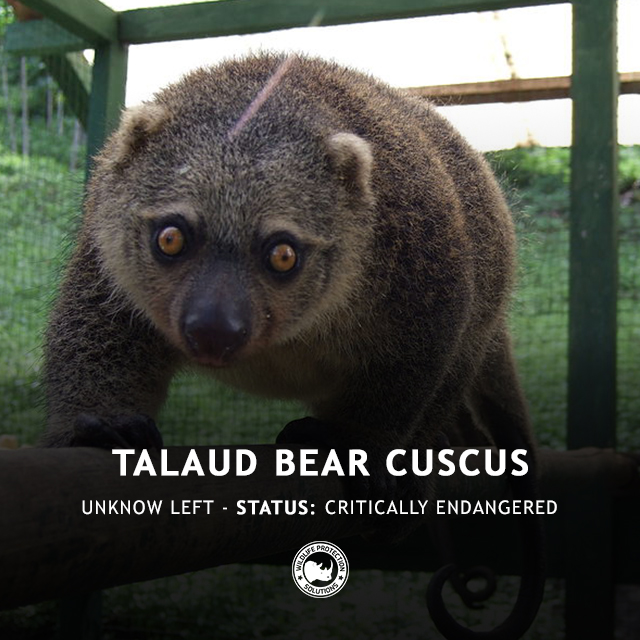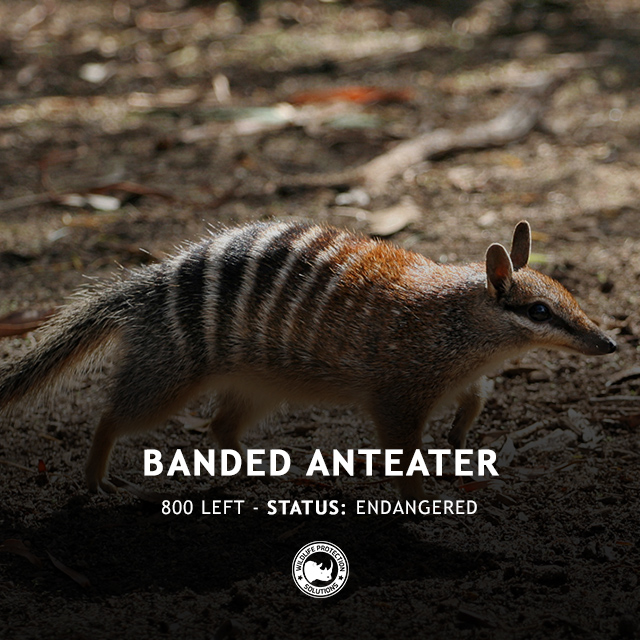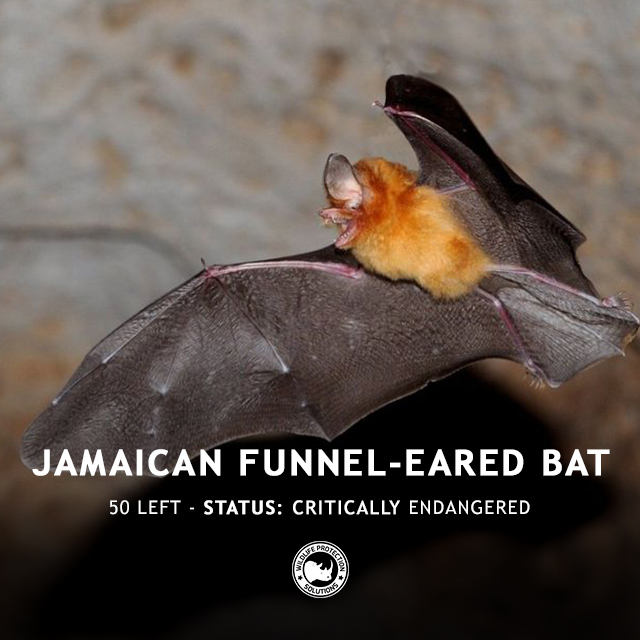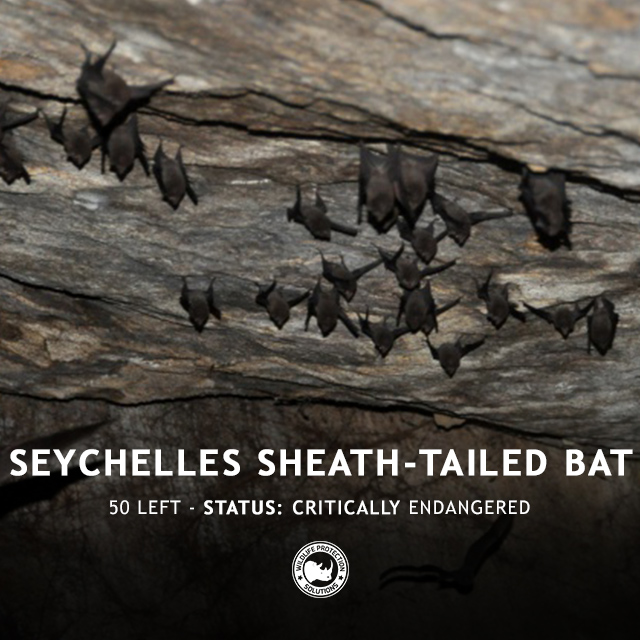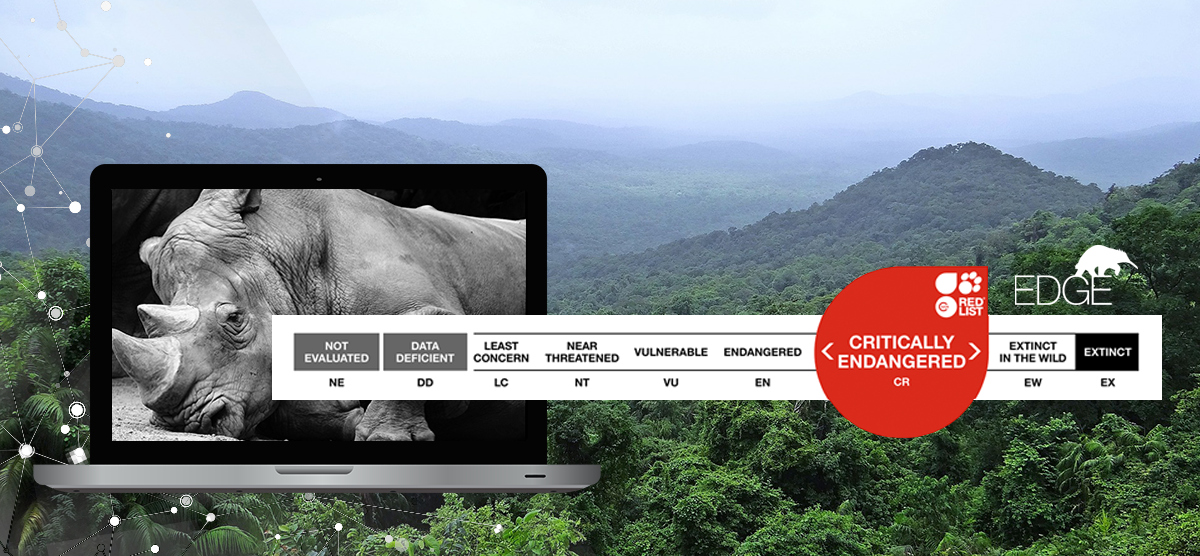DISTINCT AND ENDANGERED SPECIES:
The following selection, by no means exhaustive, presents an accurate picture of some of the most endangered animals threatened with extinction based on data from the EDGE of Existence and IUCN Red List of Threatened Species. It is our hope that this tool drives conservation efforts for some of the more critic al animals, so that we may not lose them when we have the means to save them.
| RANK |
SPECIES NAME |
COMMON NAME |
REGION |
POPULATION |
TREND |
IUCN STATUS |
EDGE SCORE |
| 1 |
Zaglossus attenboroughi |
Attenborough's Echidna, Cyclops Long-beaked Echidna |
Indonesia |
Unknown |
 |
CR |
6.80 |
| 1 |
Zaglossus bartoni |
Eastern Long-beaked Echidna |
Indonesia |
10,000 |
 |
CR |
6.80 |
| 1 |
Zaglossus bruijnii |
Western Long-beaked Echidna |
Indonesia |
Unknown |
 |
CR |
6.80 |
| 4 |
Mystacina robusta |
New Zealand Greater Short-tailed Bat |
New Zealand |
Unknown |
 |
CR |
6.78 |
| 6 |
Burramys parvus |
Mountain Pygmy Possum, Broom's Pygmy-possum, Burramys |
Australia |
2,250 |
 |
CR |
6.29 |
| 7 |
Solenodon cubanus |
Almiqui, Cuban Solenodon |
Cuba |
Unkown |
 |
EN |
6.21 |
| 7 |
Solenodon paradoxus |
Haitian Solenodon, Hispaniolan Solenodon |
Haiti |
Unkown |
 |
EN |
6.21 |
| 9 |
Dicerorhinus sumatrensis |
Sumatran Rhinoceros |
Indonesia |
220 |
 |
CR |
6.19 |
| 10 |
Bunolagus monticularis |
Riverine Rabbit, Bushman Hare |
South Africa |
500 |
 |
CR |
6.13 |
| 11 |
Diceros bicorniss |
Black Rhinoceros, Hook-lipped Rhinoceros |
Africa |
4,880 |
 |
CR |
6.09 |
| 14 |
Rhinoceros sondaicus |
Javan Rhinoceros |
Indonesia |
46 |
 |
CR |
6.02 |
| 20 |
Tapirus indicus |
Asian Tapir, Indian Tapir, Malay Tapir, Malayan Tapir |
Indonesia |
2,499 |
 |
EN |
5.69 |
| 39 |
Equus africanus |
African Wild Ass |
Africa |
23 |
 |
CR |
5.30 |
| 75 |
Tapirus pinchaque |
Mountain Tapir, Andean Tapir, Woolly Tapir |
So. America |
2,500 |
 |
EN |
5.22 |
| 258 |
Rhinoceros unicornis |
Indian Rhinoceros, Great Indian Rhinoceros |
India |
2,575 |
 |
VU |
4.68 |
| 273 |
Equus grevyi |
Grevy's Zebra |
Africa |
1,956 |
 |
EN |
4.60 |
| 299 |
Ceratotherium simum |
White Rhinoceros, Square-lipped Rhinoceros |
Africa |
20,170 |
 |
NT |
4.01 |
| 1901 |
Equus kiang |
Kiang |
Asia |
60,000 |
 |
LC |
2.53 |
THREATENED SPECIES OF ODD-TOED UNGULATES
Members of the order Perissodactyla, otherwise known as odd-toed ungulates, are mammals characterized by an odd number of toes and by hindgut fermentation with somewhat simple stomachs. Rounding out the top of the list for WPS are primarily rhinos, which have been under heavy pressure in the last decade as the price of rhino horn has increased dramatically on the black market.
| RANK |
SPECIES NAME |
COMMON NAME |
REGION |
POPULATION |
TREND |
IUCN STATUS |
EDGE SCORE |
| 9 |
Dicerorhinus sumatrensis |
Sumatran Rhinoceros |
Indonesia |
220 |
 |
CR |
6.19 |
| 11 |
Diceros bicorniss |
Black Rhinoceros, Hook-lipped Rhinoceros |
Africa |
4,880 |
 |
CR |
6.09 |
| 14 |
Rhinoceros sondaicus |
Javan Rhinoceros |
Indonesia |
46 |
 |
CR |
6.02 |
| 20 |
Tapirus indicus |
Asian Tapir, Indian Tapir, Malay Tapir, Malayan Tapir |
Indonesia |
2,499 |
 |
EN |
5.69 |
| 39 |
Equus africanus |
African Wild Ass |
Africa |
23 |
 |
CR |
5.30 |
| 75 |
Tapirus pinchaque |
Mountain Tapir, Andean Tapir, Woolly Tapir |
So. America |
2,500 |
 |
EN |
5.22 |
| 258 |
Rhinoceros unicornis |
Indian Rhinoceros, Great Indian Rhinoceros |
India |
2,575 |
 |
VU |
4.68 |
| 273 |
Equus grevyi |
Grevy's Zebra |
Africa |
1,956 |
 |
EN |
4.60 |
| 299 |
Ceratotherium simum |
White Rhinoceros, Square-lipped Rhinoceros |
Africa |
20,170 |
 |
NT |
4.01 |
| 1901 |
Equus kiang |
Kiang |
Asia |
60,000 |
 |
LC |
2.53 |
THREATENED SPECIES OF EVEN-TOED UNGULATES
Members of the order Artiodactyla, typically referred to as even-toed ungulates, bear their body weight equally by the third and fourth toes. With an evolutionary history dating back 50+ million years, ungulates include a wide diversity of species. The bactrian camel, pygmy hippo, hirola, and saola are among those ungulates in crisis status, with extremely low and isolated populations.
THREATENED SPECIES OF CARNIVORES
Members of the order Carnivora include animals which live both on land and in oceans, so for simplicity we've divided them between terrestrial and marine species. Although evolutionary history has provided carnivores with teeth and claws tailored for catching and eating prey, these traits won't protect them from the threat of human encroachment, habitat loss, and hunting. Because of their predatory nature, carnivores are often in direct competition with humans for land and food resources, and thus susceptible to becoming crisis species.
| RANK |
SPECIES NAME |
COMMON NAME |
REGION |
POPULATION |
TREND |
IUCN STATUS |
EDGE SCORE |
| 19 |
Ailuropoda melanoleuca |
Giant Panda |
Asia |
500 |
 |
EN |
5.71 |
| 100 |
Viverra civettina |
Malabiar Civet, Malabar Large-spotted Civet |
Asia |
249 |
 |
CR |
5.09 |
| 107 |
Cynogale bennettii |
Otter Civet, Otter-civet, Sunda Otter Civet |
Indonesia |
2049 |
 |
EN |
5.07 |
| 107 |
Ailurus fulgens |
Red Panda, Lesser Panda, Red Cat-bear, Tolai Hare |
Asia |
 |
 |
VU |
5.06 |
THREATENED SPECIES OF ELEPHANTS
Members of the order Proboscidea include two species: Asian Elephants and African Elephants. African elephants are taller and weigh more than Asian elephants. Both male and females have tusks, whereas only some male Asian elephants have tusks. The most immediate threat to elephants is poachers who kill them for their tusks. Elephants are also losing their habitat and migratory routes to human settlements. This loss of space and proximity to humans creates additional conflicts.
| RANK |
SPECIES NAME |
COMMON NAME |
REGION |
POPULATION |
TREND |
IUCN STATUS |
EDGE SCORE |
| 17 |
Elephas maximus |
Asian Elephant |
Asia |
41,410 |
 |
EN |
5.78 |
| 383 |
Loxodonta africana |
African Elephant |
Africa |
352,271 |
 |
VU |
4.32 |
THREATENED SPECIES OF PRIMATES
Members of the order Primates arose from ancestors that lived in the trees of tropical forests; many primate characteristics represent adaptations to life in this challenging three-dimensional environment. Most primate species remain at least partly arboreal. With the exception of humans, who inhabit every continent, most primates live in tropical or subtropical regions of the Americas, Africa and Asia.
| RANK |
SPECIES NAME |
COMMON NAME |
REGION |
POPULATION |
TREND |
IUCN STATUS |
EDGE SCORE |
| 29 |
Indri indri |
Indri |
Madagascar |
1000 |
 |
CR |
5.6 |
| 30 |
Galagoides rondoensis |
Rondo Dwarf Galago, Rondo Bushbaby |
Africa |
Unknown |
 |
CR |
5.58 |
| 37 |
Varecia variegata |
Black-and-white Ruffed Lemur, Ruffed Lemur |
Madagascar |
64 |
 |
CR |
5.52 |
| 41 |
Prolemur simus |
Greater Bamboo Lemur, Broad-nosed Gentle Lemur |
Madagascar |
500 |
 |
CR |
5.50 |
THREATENED SPECIES OF MARSUPIALS
Members of the order Marsupialia include a variety of species—all endemic to Australasia and also the Americas. A distinctive characteristic common to these species is that most of the young are carried in a pouch. Kangaroos, wallabies, koalas, possums, opossums, wombats, and Tasmanian devils are all well-known marsupials.
| RANK |
SPECIES NAME |
COMMON NAME |
REGION |
POPULATION |
TREND |
IUCN STATUS |
EDGE SCORE |
| 6 |
Burramys parvus |
Mountain Pygmy Possum, Broom's Pygmy-possum |
Australia |
2250 |
 |
CR |
6.29 |
| 12 |
Lasiorhinus krefftii |
Northern Hairy-nosed Wombat |
Australia |
80 |
 |
CR |
6.06 |
| 24 |
Ailurops melanotis |
Talaud Bear Cuscus |
Indonesia |
Unknown |
 |
CR |
5.64 |
| 31 |
Myrmecobius fasciatus |
Numbat, Banded Anteater |
Australia |
800 |
 |
EN |
5.57 |
THREATENED SPECIES OF RODENTS
IUCNredlist.org/rodents
Belonging to the order Rodentia, rodents play an important role in the ecosystem; they help disperse a variety of plant species across the landscape, and serve as food for other animals, thereby sustaining many animal populations. Rodent populations are threatened in some places due to factors such as habitat loss and excess hunting of their fur. Visit the IUCN website link above to learn about threatened rodent species.
THREATENED SPECIES OF INSECTS
IUCNredlist.org/insects
Belonging to the phylum Arthropoda, insects contribute to the health of ecosystems by aerating the soil, pollinating blossoms, and controlling (other) insect and plant pests. Insects help to decompose dead plants and animals, which helps recycle nutrients back into the soil. Due to loss of habitat and other factors, survival of different insect species is threatened, from butterflies to beetles to crickets. Visit the IUCN website to learn about threatened insect species.
THREATENED SPECIES OF CETACEANS
IUCNredlist.org/cetaceans
Cetaceans are marine mammals of the order Cetacea, which includes more than 80 species of whales, dolphins, and porpoises. There are two main groups: Mysticeti (baleen whales) and Odontoceti (toothed whales). These air-breathing creatures primarily feed on phytoplankton, fish, and invertebrates, and help maintain a stable food chain. Most whales inhabit nutrient-rich, cold water areas but migrate to warm oceanic waters to breed. Cetaceans use vocalizations and echolocation to communicate. Underwater noise pollution and dense shipping traffic impacts is dramatically affecting their numbers. Whale hunting for blubber, rich in oil, has been another primary threat to their survival. Visit the IUCN website link above to learn about threatened cetacean species.
THREATENED SPECIES OF AMPHIBIANS
IUCNredlist.org/amphibians
Amphibians, of the class Amphibia, include frogs, toads, salamanders, newts and caecilians. Their skin is typically moist due to a think layer of mucus that covers their bodies. Amphibians are highly sensitive to pollutants from air, water, and soil. They are regarded as a sentinel species for alerting humans to imbalances in the environment. Their population numbers are declining at an alarming rate—at 10,000 times the rate of other organisms. For this reason, many scientists speculate they are on the brink of mass extinction. Visit the IUCN website to learn about threatened amphibian species.
THREATENED SPECIES OF BIRDS
IUCNredlist.org/birds
Belonging to the phylum Chordata, many birds are important to plant reproduction for being pollinators and seed dispersers. Birds also eat insects, preventing any one species from becoming too numerous. They are also food to many other animal species, thereby contributing to the food chain. Loss of habitat, climate change, illegal animal trade, and noise and light pollution are among the factors threatening their populations. Visit the IUCN website to learn about threatened bird species.
